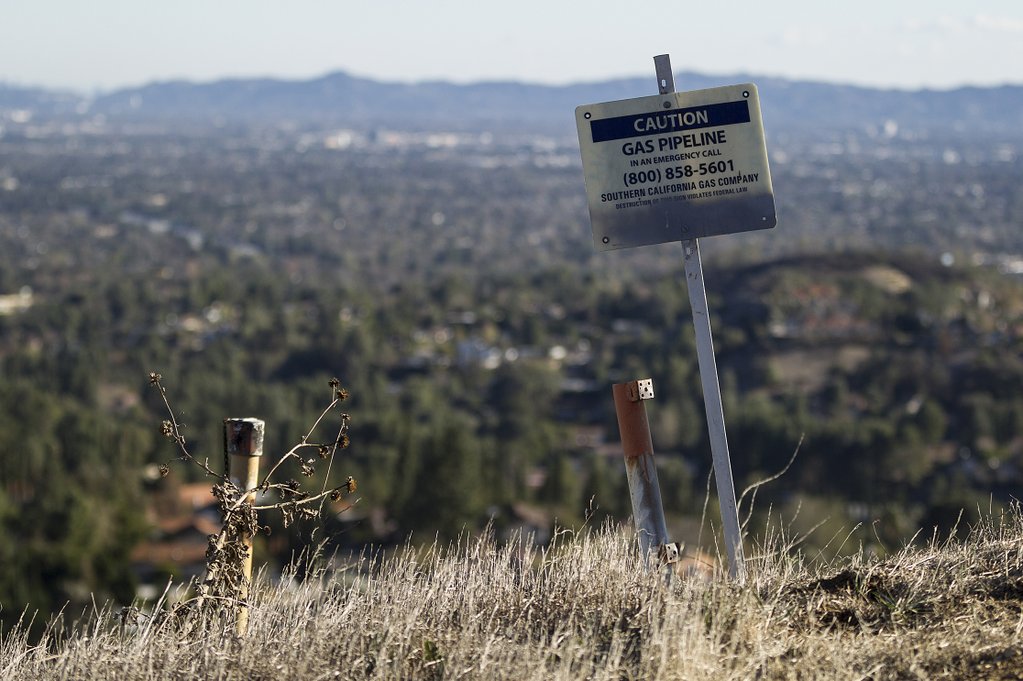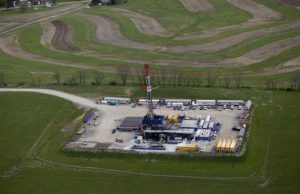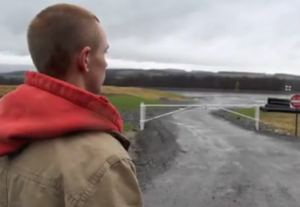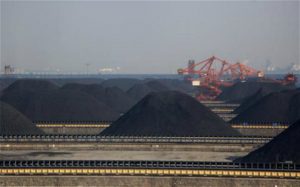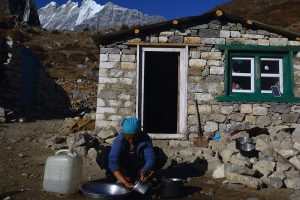California is still reeling from the impact of a huge leak that began late last year of natural gas and methane, a highly potent greenhouse gas (GHG). The leak prompted a state of emergency and calls for a crackdown on the fossil fuel industry.
In October 2015, a massive natural gas storage facility operated by SoCalGas in Southern California’s Aliso Canyon sprung a leak approximately 400 feet (121 metres) underground, resulting in a major health risk for nearby residents.
So far, 2,600 families have temporarily fled their homes because of the sickening smell of the gas, and 2,700 more families have applied for relocation.
Although the impact to the community located next to the facility is apparent, it’s hard to comprehend the size of the leak and the damage it is causing to the climate because methane is invisible to the naked eye. Recent infrared video released by EDF, however, displays the invisible methane as billowing black smoke covering the San Fernando Valley like a never-ending dumpster fire. More than a million YouTube views later, the image is hard to ignore or deny.
Initial estimates showed the leak was pumping out about 62 million cubic feet of methane each day, which is equal to the daily near-term climate damage caused by 7 million cars. The leak from the Aliso storage well accounts is equivalent to a quarter of the state’s total GHG emissions. By reducing the pressure underground, the utility has been able to cut the leak rate by almost half, but it’s still creating serious environmental harm every day that it continues.
Over the years, California has been trailblazer in renewable energy and other environmental initiatives, including a 50% renewable energy goal by 2030 and efforts to cut its GHG emissions to 1990s levels by 2020. This one leak, however, will amount to a big increase in California’s GHG emissions, putting a big dent in those efforts.
Turning point?
Aliso Canyon is a dramatic example of a problem that’s happening every day across the US at every stage of the oil and gas supply chain, from wellheads to the local utility lines under city streets. A series of scientific studies that have looked at methane emissions across the country’s natural gas supply chain lead to a single conclusion: leaks, equipment failures, and malfunctions are a major reason why the oil and gas industry is the largest industrial source of methane pollution in the US.
Certainly, most leaks in the US aren’t as big as Aliso Canyon. But they add up. More than 7 million tonnes of methane are emitted from the nation’s natural gas infrastructure each year. Most leaks go undetected because no one is required to look for them.
Fortunately, the US may be at a turning point with methane. Last year, the Obama administration made methane reductions a key part of its climate initiative. Academic researchers – including many sponsored by EDF – are conducting groundbreaking research to quantify methane leak rates and develop leak detection technology and policies. EDF’s partnership with Google Maps allows people to see street-level methane leaks from gas infrastructure in cities across the country.
Carbon footprint
But, the problem isn’t just limited to the US. A recent report showed that worldwide, oil and gas emissions released approximately 3.5 trillion cubic feet (Tcf) of natural gas into the atmosphere in 2012. That’s the same near-term climate impact as emissions of 40% of total global coal combustion.
Because natural gas burns cleaner than coal, it has been touted as a cleaner energy alternative. Yet the thousands of small methane leaks occurring at all stages of the oil and gas supply chain undermine the climate advantage natural gas can provide — the 7 million tonnes of methane that leaks from the US oil and gas supply chain each year has the same 20-year climate impact as 160 coal-fired power plants.
It is now understood that we must fix the methane problem. That’s a critical first step. But we can’t fix what we don’t measure. Therefore, one of the most basic and logical requirements of a long-term solution is requiring regular and systematic monitoring of natural gas infrastructure. This is relevant not just for large, catastrophic leaks like Aliso Canyon, but also for the thousands of smaller, less dramatic leaks across the supply chain that add up to massive amounts of leaked methane.
US climate policy
If the US is to answer the clarion call of the Paris climate Agreement, it must reduce its methane emissions, not just from large disasters such as Aliso Canyon, but also from the thousands of silent, invisible and undetected leaks across the country’s natural gas infrastructure. Because of its potent warming power and the cost-effective solutions available to reduce oil and gas methane emissions, tackling this pollution is one of the greatest opportunities to reduce the warming we’re feeling today.
A 45% reduction in global oil and gas methane emissions will have the same impact on the climate over 20 years as closing one-third of the world’s coal plants. As other countries take their own steps to follow up on Paris commitments, they should also take note of the GHG reduction opportunity methane presents.
We are hopeful that the enormity of Aliso Canyon will spur meaningful action in Washington DC and energy producing states in the US. Because without sensible and strict rules and regulations, this will happen again. And without comprehensive methane policies for new and existing natural gas facilities, millions of tonnes of climate-harming methane will continue to leak each year.
